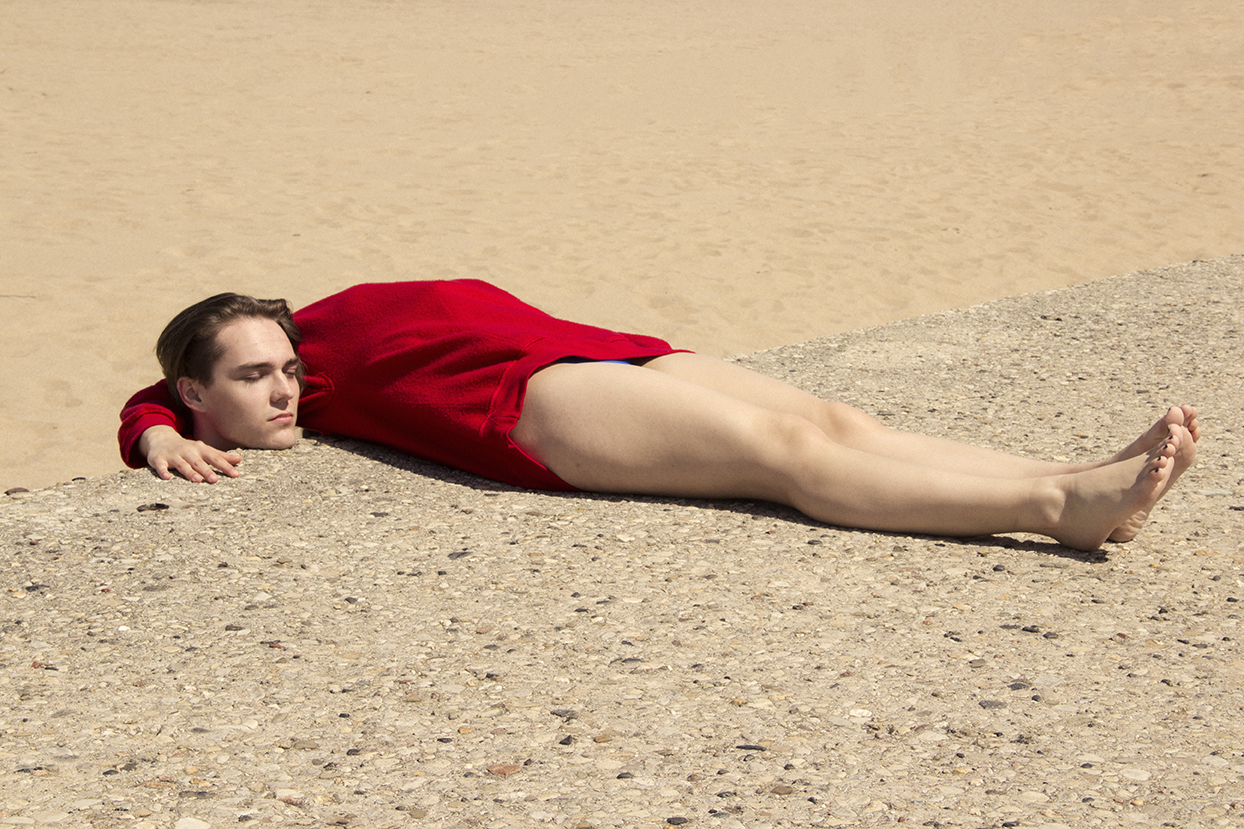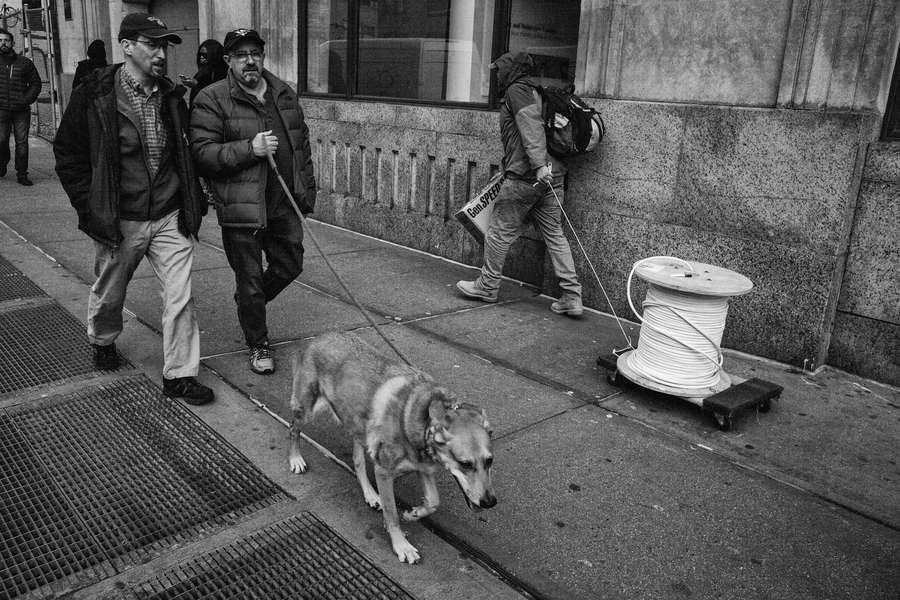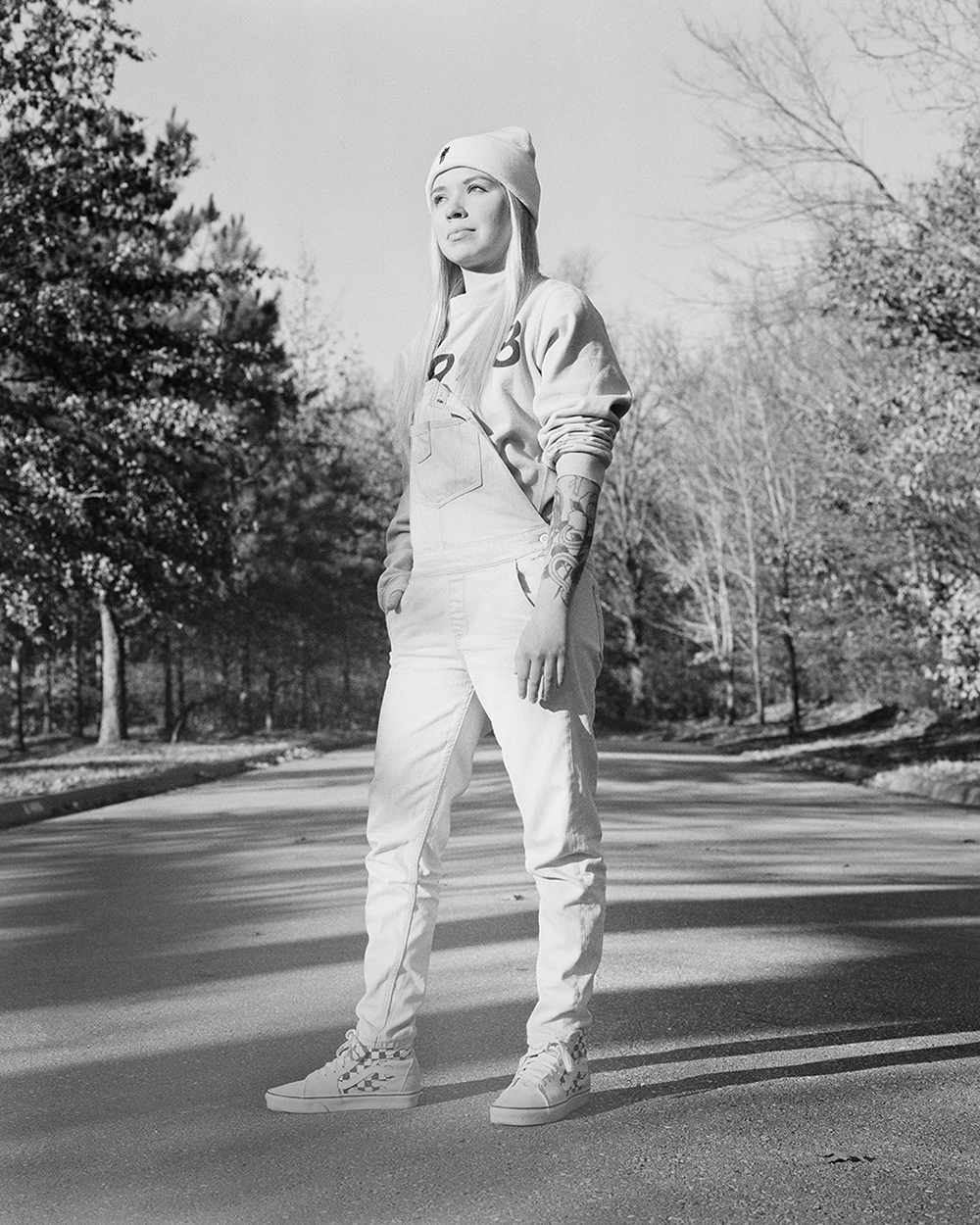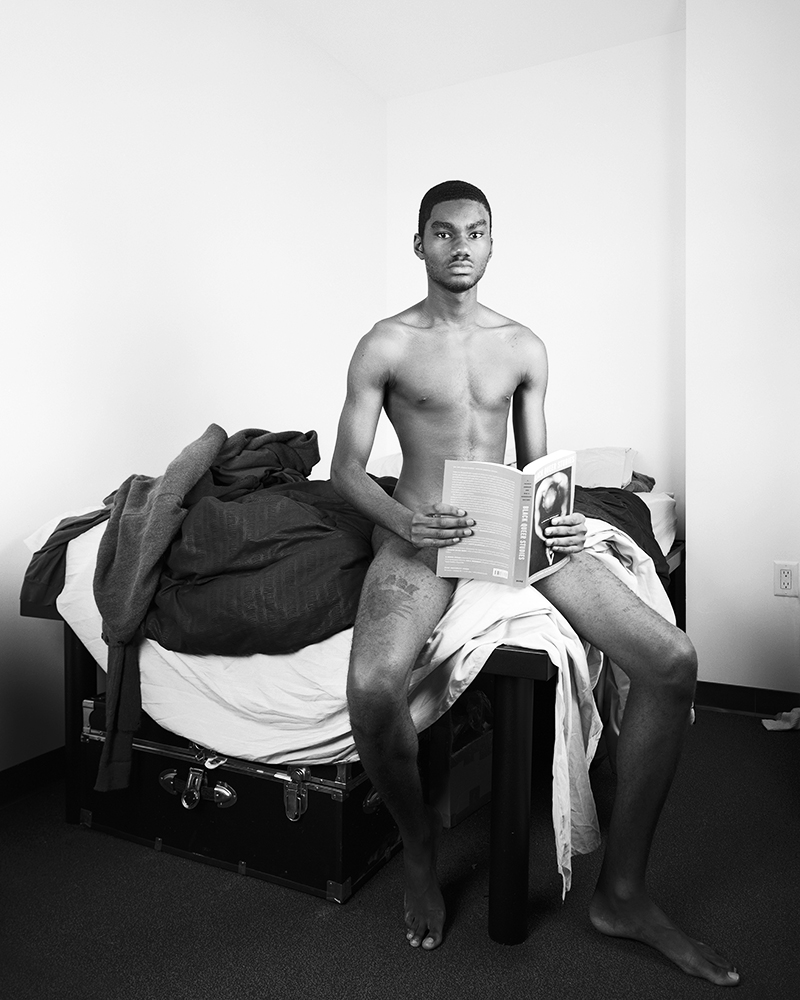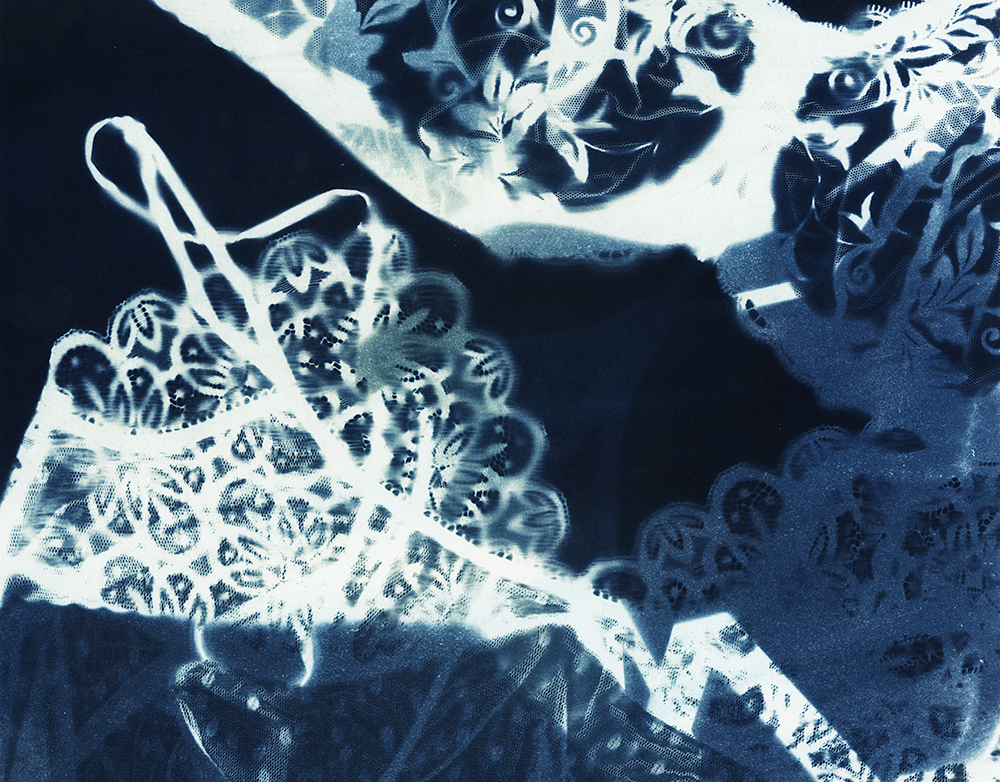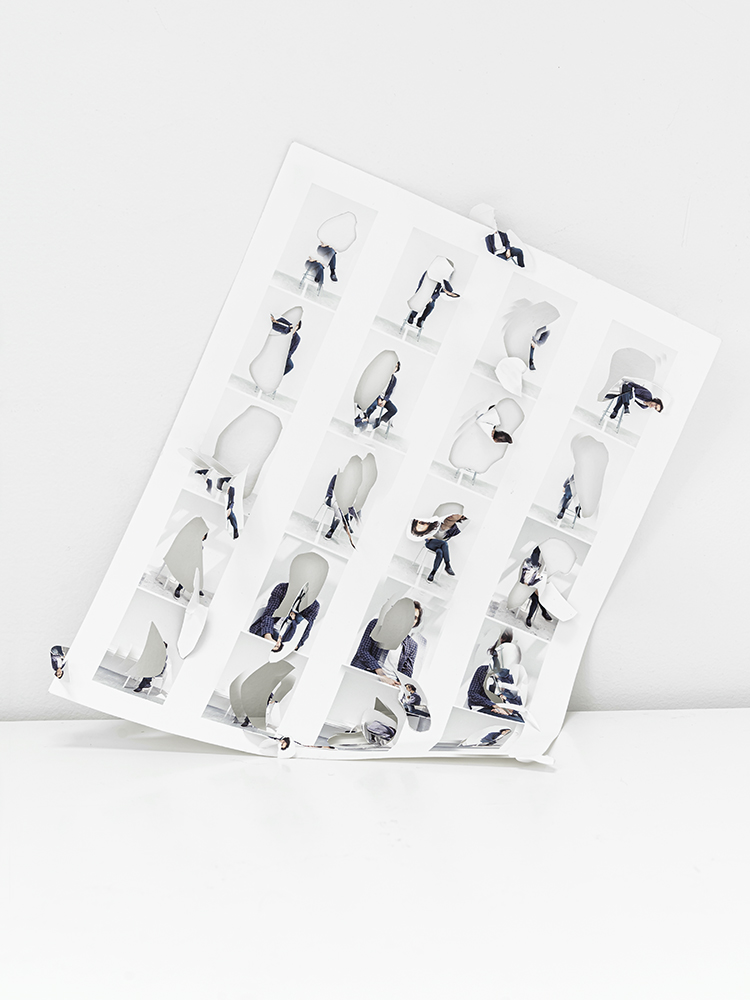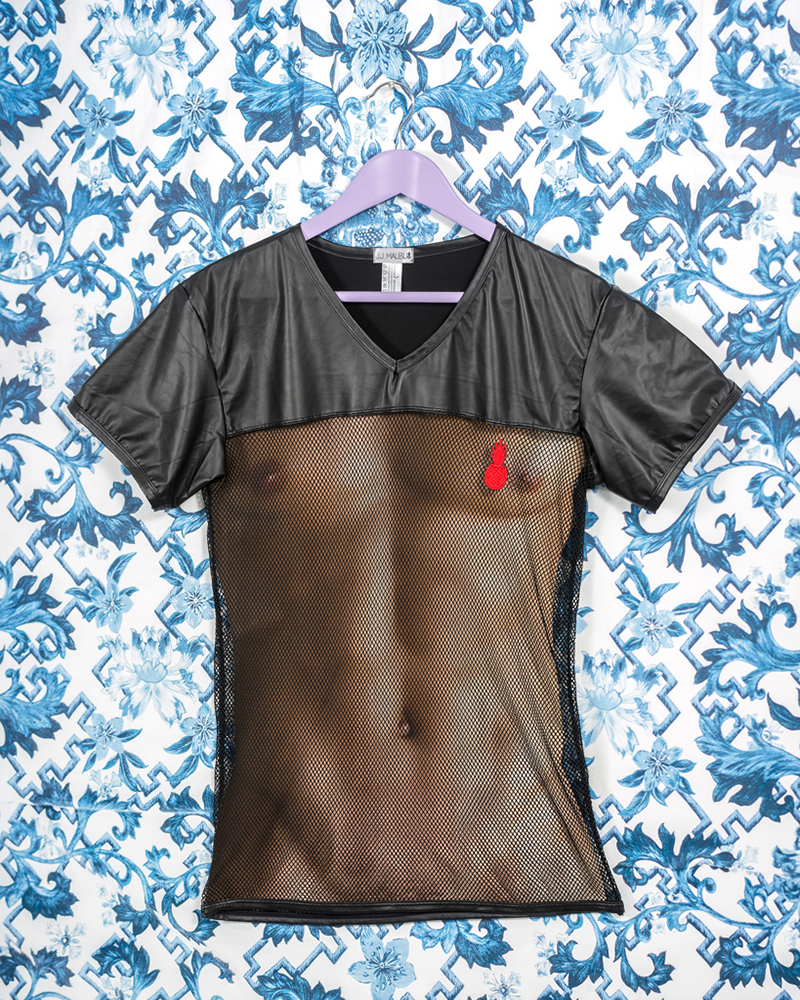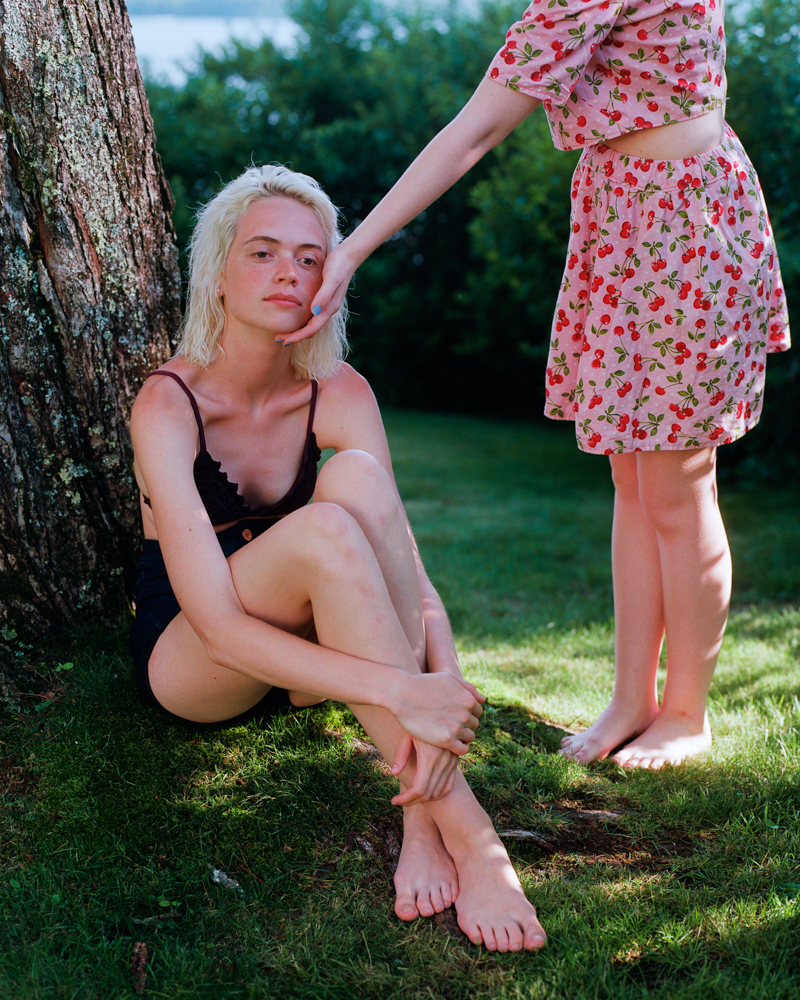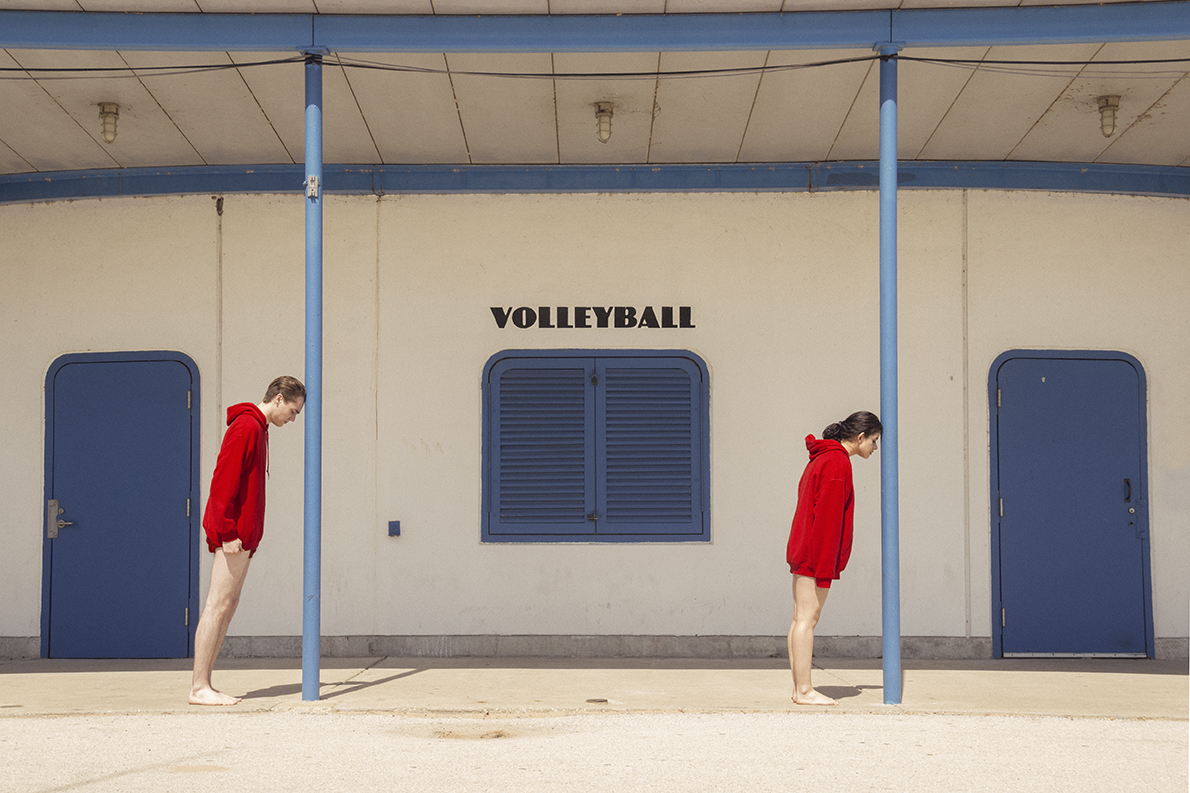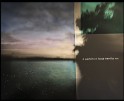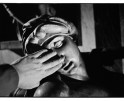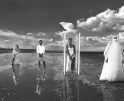Now What? Thoughts on the future of photography
We, at Lenscratch, as well as many not-for-profit organizations, are continually considering what the next generation of photographers are thinking about in terms of their careers and their needs after graduation. We have observed that this generation of photographers are doing things differently–not engaging in the same paths and opportunities. They are creating collectives, producing pop-up shows, and coming up with new strategies that avoid the debt that can come from framing, shipping, and mounting exhibitions onto the debt of graduate school.
We asked photographers who applied for the Lenscratch Student Award to tell us what the photo world looks like from their perspective. We asked what they needed in terms of support from the photo world. We asked how they plan to make their mark and if they have discovered any new and innovative ways to present themselves as artists.
Thank you to the following artists who took the time to share their thoughts and insights.
Kaitlyn Jo Smith
kaitlynjosmith.com
@kaitlynjosmith_art
University of Arizona, MFA
Inclusivity is a term we throw around a lot in art, and while I do recognize that in many ways we have become much more open to different ideas than generations prior, there is still room for improvement. To me, this need for improvement is an exciting challenge. I grew up in a rural, working class, rust belt community, where resentment has grown out of a lack of a voice. When I moved to the city to get my BFA, I saw this lack of representation carry through to the walls of galleries and museums. I believe artists can bridge these gaps. We live both white collar and blue collar lives simultaneously and understand the working man’s plight as well as the businessman mindset. Changes in technology and trade agreements have made manufacturing jobs harder to come by sending many millennials and gen-zers to urban centers. I was 13 when the housing bubble crashed and the midwest became riddled with unemployment and opioids. I am not the only young artist to see this, to flee the countryside in search of more opportunity. My hope is that we don’t turn our backs on these places. I want to tell the stories of the men and woman of the rust belt because I have seen first hand how loyal, hardworking and resilient they are in the face of adversity. These are the voices we need to be listening to and taking more seriously. Ignoring suffering people from rural places leads to frustration and desperation; it leads to Trump’s America. Since the election, I have noticed more and more photographers stepping up, looking back towards their roots, evaluating themselves and using their art to bridge gaps in understanding. This makes me optimistic as both an artist and a citizen of earth. I hope this trend continues among the photographic community.
It is my goal to make work that creates pathways for understanding. Change happens not by changing someone’s opinion, but by making them believe that the opposing opinion is valid. More and more exhibitions are focusing on midwestern cities; I would like to see them begin focusing on the country as well. I would also love to see more of an emphasis on bringing art into less populous spaces. I think this happens most successfully through photo books and the internet. Museums and galleries are incredibly important culturally hubs, but the truth is that they are not accessible to fifty percent of this country. I didn’t go to my first art museum until I was in college. If people can’t get to the art we got to get art to the people!
Reuben Radding
Goddard College
MFA in Interdisciplinary Arts
www.reubenradding.com/
@reuben_radding
The photo world looks to me (for better or worse) exactly like the music world I know so well. What this means in practical terms is that I see us struggling with old models and old narratives in a world where it seems, to many of us, that the external rewards for living up to those past models have become slim to non existent. Photo schools and art departments are under great pressure to prepare their students to become human resources, having previously seen so many in the past finish art school and fail to find a living. (We really think an art school is a way to address this?) Yet the photo careers that used to be fairly viable no longer reliably pay a living wage, even if one can cultivate some semblance of that life and get past the gatekeepers. More and more, photographers exist as a professional class to sell luxury products and experiences to a class of privileged amateurs. We can all look at each other and our institutions, and point the finger, but what it really comes down to for me is the dreadful scourge of capitalism. Artists will always be easily exploited, not just because we love what we do, but because need to do it. As a young aspiring artist, I never had as a desire to be part of an industry. I wanted to experience ecstasy. I wanted to make a contribution to the world of ideas, and to reveal things about the magic of being alive that can only be communicated through a personal artistic voice and vision. I am experienced enough in life to know that if I am going to “make a mark” it will probably not be by my design. Probably, it does depend on continuing to make work I care about. Probably, it does depend on my continuing to share my thinking. Probably it means not waiting for the day when I’ll have “made it,” but rather recognizing that I’m living the dream TODAY, and I don’t have to wait for anything. If I hang my hopes and dreams too much on specific kinds of rewards, in a world changing so rapidly, I might be cutting myself off from another kind of success I don’t know to look for.
As for how we could be presented differently, or supported? I’m tempted to rail against ageism, considering how few scholarships were open to me as an older student. I’m tempted to complain about the over-emphasis in the current photo world on story over imagery, too. But, truly, my foe isn’t those specific issues, it’s the underlying problem, which is defining our world by categories and imagined life trajectories that hold true for only a slim number of people. Categories like “emerging artist” for example, feel like they carry an assumption that careers all follow a certain trajectory of linear development, which my colleagues and I do not find to be the case. The biggest thing missing from the interactions I am finding myself in in the photo world is positivity. (I’m calling myself out here as well.) Since the week I started grad school, not a single day has gone by without someone telling me all the reasons that getting an MFA was a waste of time and/or money, that there were no teaching jobs left in the world, and that you can’t make a living. Many have told me that photography is dead, or that it’s all been done before, or that you can only get your work out to a wide audience if you are already rich and privileged. And many of these negative messages have some truth within them. But as I was saying before, if you need to do this work, you will do this work, and if I learned anything from my previous career, it’s that the real rewards are in the practice, they’re in the community, and they’re in the understanding we foster by sharing our work with others. I’d like to see a little more emphasis on the WHY we do this, more than the careerism we can so easily become consumed by. I just want to live in the work.
Nicole Norman
University of Arkansas MFA
www.nclnrmn.com
@nicolenorman
I used to think that the photo world was this massive, elitist establishment that I was participating in, but would never have the opportunity to make an impact on. The longer I embrace the community and talk to my peers, the more I realize that we’re all in this lovely little bubble together. In some ways, I think we have platforms like Instagram to thank for that. I love being able to keep tabs on my favorite photographers or discover new ones on a daily basis. Then I end up meeting those people at exhibitions, conferences, or just by happenstance. I think the photo world is becoming a more accessible community where we get to see how other people view the world.
What you need in terms of support from the photo world?
This is a tough one. The work that I submitted focuses on bisexuality and the struggles that individuals face by existing in the gray-area of sexuality. Those are feelings that I share with my subjects and am interested in giving visibility to, but I know these issues pale in comparison to other issues — both inside and outside of the LGBTQ+ community.
As a white, straight-passing queer woman, I have recently been asking myself if I’m allowed to take up space in the photo world. I see so many wonderful platforms that are celebrating artists of color and queer artists. Those are communities that I don’t belong to or don’t feel comfortable participating in because of the privilege that I know I have. I don’t think it’s my turn to ask for support.
How do you plan to make your mark?
Something that I am constantly trying to maintain in my work is honesty. These days it seems like an impossible task, which I’m sure all photographers can relate to. What is honesty? Or truth even? I’ve spent my fair share of class time discussing those topics and frankly, I don’t know.
Personally, I know I’m being honest in my work when someone feels impacted by what my photographs are communicating to them. What I love the most about this medium (and art in general) is how it can provoke emotion and lead to a meaningful connection between the photographer, the image, and the viewer. That’s my idea of making a mark — on the viewer and myself.
Have you discovered any new and innovative ways to present yourself as an artist?
The day you sent these questions I was quite literally in the midst of an artistic identity crisis. It was great timing, really.
Recently I have been a little too aware of how I am or am not presenting myself as an artist and it’s crippling to say the least. I want to say again that Instagram (and the internet in general) has completely changed the way the art community looks and interacts with each other. Which is great! But there is pressure to perform a certain way — or reach some imaginary milestone, like a follower count, that validates you as being successful. Taking those things into consideration is stupid. It’s inauthentic and defeats the intent of the work I’m making in the first place!
So, after thinking about it for a while I decided that the best way to discover how I’d like to present myself as an artist is to give myself some freedom. It’s kind of like hitting the reset button.
Nick Drain
Milwaukee Institute of Art and Design, BFA – 2020
nickdrain.com/
https://www.instagram.com/nckdrn/
As someone who has always preferred to work with the single image rather than in series, I always feel excluded when it comes to applying for competitions, grants, or any other kind of submission built around the serial format. I think quite a lot of the photographic world operates around common photographic conventions of working, a lot of which I’d like to see shaken up. I most commonly look for— and benefit from— support from individuals and organizations who are willing to try to push the boundaries of those conventions.
Yet, the position that I have described has not been all bad. Working outside of conventional formats has forced me to become much more proficient at creating bridges between elements of my work that may not be explicitly connected. This ability has grown out of the need to adapt, and I identify it, as well as my willingness to work in mediums outside of photography as two of my greatest strengths as an artist. They are what I lean on to keep my work exciting to make, and hopefully exciting to view.
Cali M. Banks
MFA Candidate in Interdisciplinary Media Arts Practices at University of Colorado Boulder
Http://www.calimariebanks.com
https://www.instagram.com/bankscal/
The art world, in general, seems to be run by men. As a younger woman emerging into the professional sphere, I find it important to be able to make a stance with everything I do, say, and make. I think it’s necessary to let the work speak for itself, rather than making assumptions based on an individual’s appearance, age, gender expression, race, sexuality, etcetera. I have been in so many condescending situations- frame shops, gallery openings- because of my appearance, and how those assumptions lead to an individual thinking I am not the particular person that would be in an MFA program. The world of art, including the photo world, needs to be more open and accepting of the individuals working and living inside of it.
In my own work, I have a heavy hand in themes of identity and discourses on femininity. As bodily autonomy is dwindling because of current government standings and affairs, these themes are important as ever. Not only is it important to make a stance about your culture, heritage, or place in society, it’s important to push your work further than its limits. In that sense, I work beyond a flat, two-dimensional image. I have incorporated layers of thread and paint in my work, using wood as a base, carving imagery by using a CNC router, and creating immersive multimedia installations fabricated from steel into my practice. As my themes are rooted in historical processes and theoretical concepts, my work pushes the boundaries of emerging technologies and new media practices. Working with a flat image is a start, but I want the audience to feel every emotion that I feel when I am creating. Intimacy is key.
I may be in a photography program, but I am a strong believer in being an interdisciplinary artist. Having a personal, performative hand in my work is what makes me a strong creator, as well as a strong woman. The world needs strong leaders, and it starts here, with creative and progressive minds.
From my perspective the photo world is continuously growing and it’s extremely exciting to see. This process has drastically shaped the majority of people’s lives and seeing the plethora of people utilizing it to question and approach these various ideologies is moving. The only way that this can continue cultivate is with community and discussion. There are so many people who are working through ideas and making fantastic imagery, and as a society if we are able to continuously push each other to continue to make our best work, it can only get better. I believe an opportunity to spread these interactions even further so that we can all participate in pushing each other, sharing opportunities, and having critical discussions would be extremely beneficial. To continue this process for myself, there is a drastic necessity to simply keep actively making work. My work has a hyper fixation towards what a photograph may communicate and its readability to its viewer. The only way to continue to experiment within this is to persist with making images and exploring why and how their context can be re-contextualized. Within this, I have found that a prime way to better my work is by actively participating within my communities. This applies to both my immediate physical art community and the people I am able to interact with socially through the internet who are actively participating in their local art and photographic communities. Going to shows, having discussions, participating in studio visits, it seems very obvious, but without taking part in the communal aspects of your immediate art world, the conversations and feedback that one would be able to get can never be applied to help.
Zak Dimitrov
zakdimitrov.com
Instagram: @zakrdimitrov
University of Westminster, MA Photography Arts
I see the photo world as quite a small community of likeminded people. Here in London there are lots of free events such as talks, book launches, exhibitions, etc. which allows people from the industry to meet up, discuss ideas and collaborate on a regular basis. Plenty of people, even some who are quite advanced in their career, are very generous with their time in terms of giving advice regarding projects and general industry tips, which is fantastic. In terms of support, I think there should be more free opportunities to enter, which would give your work visibility and could potentially lead to paid commissions – this is a big problem here in the UK as the majority of things are done for free and all artists I know need to have a day job to support themselves. Now it’s really easy to get visibility, Instagram is a great platform and it’s a free way to connect with people one wouldn’t normally link with if it wasn’t for Instagram, but a few collectives have begun to emerge where people with similar ethos and ideas get together and find out ways to put up exhibitions, launch zines, etc.
Dylan Everett
Rhode Island School of Design, MFA – 2019
http://dylan-everett.com/
Fresh out of graduate school, my peers are my most important resource in the photo world. Having a few close friends whose opinions you trust and respect is so important once the structure of regular studio visits and critique is gone. After that, I’d say Instagram is crucial. I don’t post my work on Instagram very often, but I have used it to forge connections with artists who I would’ve never met otherwise. It is also my primary resource for learning about opportunities — whether jobs, exhibitions, residencies, or grants — and for keeping up-to-date with what other photographers are working on. I always prefer to look at photographs in person, but I recognize that getting my name out there online is probably the best way I can start making my mark.
Will Harris
Lesley University College of Art and Design, MFA in Photography & Integrated Media – 2019
https://willharris.co/
From my perspective, I think that the photo world looks pretty vast with lots of possibilities. My MFA program was based in photography and integrated media and there was a lot of freedom. Along with making photographs I had the freedom and encouragement to create with other media. For example, I created audio pieces that worked hand and hand with my images and could also live on their own. I don’t believe that this freedom was limited solely to my program but is extended to all of the photo and art world…at least that’s my hope. I think that utilizing other medias is great way way to present yourself to a wider audience as an artist.
In terms of support from the photo world, I would like to see more photography specific or photography & integrated media residences. I have done a residency in the past but it wasn’t photo specific – I found that it was great opportunity to avoid the day to day doldrums, to make site specific work that you might not make elsewhere or continue to work on a project but with out any distractions. It is also a great opportunity be around other artist that you my not every normally interact with.
Tabitha Barnard
Massachusetts College of Art and Design, MFA Candidate
http://www.tabithabarnard.com/
https://www.instagram.com/tabitha_barnard/
Right now I love seeing how many opportunities there are for emerging photographers. I feel in the last two years I’ve been exposed to so much work by new artists and had more and more platforms open up to me and my peers. I do wish there was more support for emerging photographers financially though. Something myself and many of the young artists around me struggle with is being accepted to a show then required to pay for professional framing, shipping costs, and printing costs with no offer of financial support. There seems to be this inherent assumption that if you’re working in the art world you have money. I’ve seen this assumption of financial privilege prevent many talented photographers from even applying for grants and shows. And finally, I think access is just so important for photographers. Having more community photo spaces and making them less exclusive and more accessible for young photographers is so important so that they can engage with the medium again. A local photography space in Portland, Maine called The Bakery has been working really hard to become more inclusive and offer more access, internships to students, and community classes. It’s spaces like this that offer the support emerging artists really need right now.
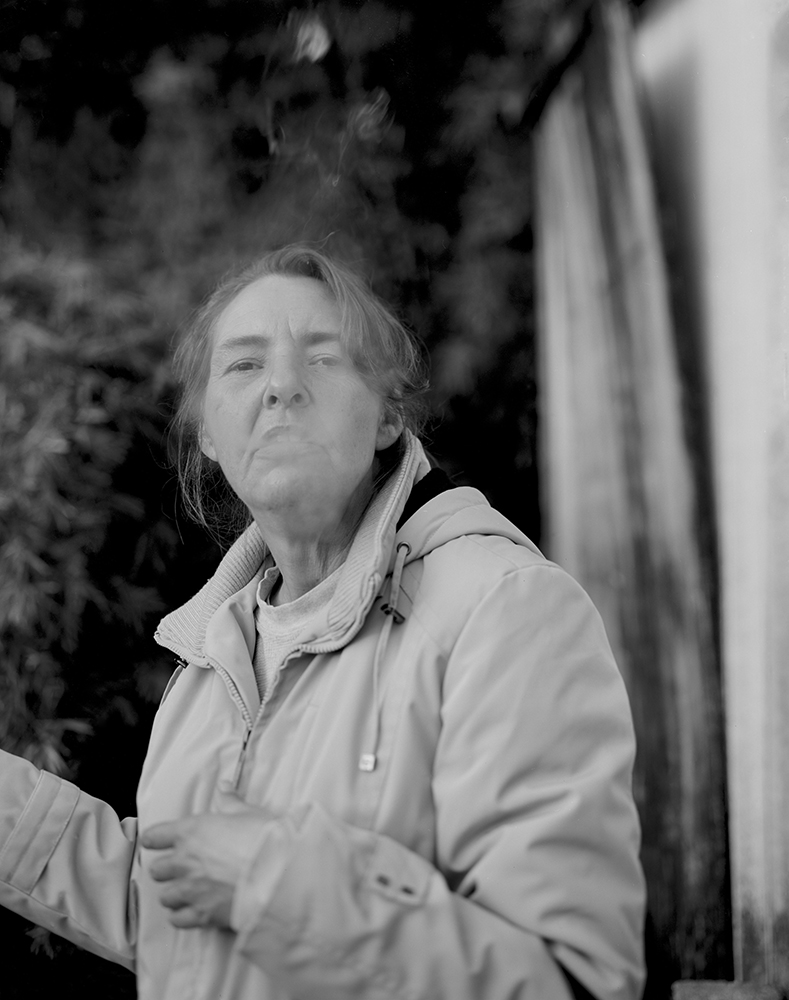
Chance Deville
Rhode Island School of Design, MFA Candidate – 2021
https://www.instagram.com/chancedeville/?hl=en
In terms of my career after graduation, I hope to be a professor to help guide the next generation of artists and teach others about a subject that I’m passionate about. I want to maintain a sustainable practice while doing this and continue to grow in my own work and self. The photo world has always proven to have extremely friendly people and supportive artists all around. The work that I’ve seen in the last few years is also stunning and there are powerful photographers making their claim in the contemporary art world, not just the photography bubble. It’s also exciting to see a resurgence of film after the digital age. I would like to see more financial help available to emerging photographers/students to help progress their career, especially in a gallery setting. This is nothing new, but still a problem for us as up and coming artists. Making your mark is always difficult but being genuine and creating work that is important and engaging to a target audience is an honest way to establish yourself and your work as an artist. Not being afraid of rejection and applying/sharing your work in as many ways as possible are foundational tasks in progressing in the photo world. I’ve found social media to be a great way to present my work and connect with photographers all over the world where I wouldn’t normally be able to show my work or speak with others. Especially being from a small town in Louisiana, social media has given me a great platform to connect with others who share similar interests in photography and a way for me to keep up with what’s happening in the contemporary scene.
Rossella Agostini
https://rossella-agostini.com
@rossella.agostini
Columbia College Chicago – Cinema Art+Science (BFA) – awarded May 2019
The photo world appears to be very saturated to my eyes. Taking pictures became very accessible to everybody and the content is consumed very quickly. We snap, scroll and repeat – photographs tend to get lost and it is harder to stand out. Building a following became very important, especially if you do fine art photography as you could get the attention of potential collectors.
Just like in every industry, not only you have to make great work to emerge, but you also need to understand the business side of it. I have been getting a lot of exposure by contacting journalists and getting my work published in online magazines. Exposure though doesn’t necessarily pay the bills. I still believe in the importance of showcasing your work in art galleries. I wish there were more opportunities for artists to show their work to gallerists and receive feedback. A sort of “open call” every week like they do for modeling agencies. I would also like to see more collaborations between fine art photographers and brands; It would be interesting to have contests where the winners get to shoot a campaign based on their style. This is just food for thoughts.
Thank you for this prompt and for your hard work in continuing to promote emerging photographers.
The artists in newflesh abstract the subjects and materials they use. These works embody a mastery of what is possible in front of the camera, as well as technologically once the photo has been made. These images force us to look beyond the familiar, so that we may see them for what they could become.
Posts on Lenscratch may not be reproduced without the permission of the Lenscratch staff and the photographer.
Recommended
-
2023 in the Rear View MirrorDecember 31st, 2023
-
The 2023 Lenscratch Staff Favorite ThingsDecember 30th, 2023
-
Inner Vision: Photography by Blind Artists: The Heart of Photography by Douglas McCullohDecember 17th, 2023
-
Black Women Photographers : Community At The CoreNovember 16th, 2023

